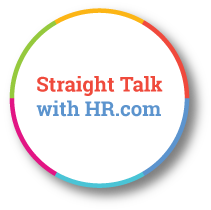‘Data-driven Approach Will Usher in a New Era of Efficiency and Effectiveness in Talent Management’
Exclusive interview with Shrinivas Ayyagari, Chief Human Resources Officer at Thryve Digital
Posted on 12-19-2023, Read Time: 9 Min
Share:

 |
“I believe the potential for HR to leverage data and analytics in making hiring decisions is vast and largely untapped. While HR may have been one of the last functions to adopt technological advancements, significant strides have been made over the past decade. The future of talent intelligence and recruitment analytics holds the promise of a more data-driven and informed approach to HR practices, ushering in a new era of efficiency and effectiveness in talent management,” said Shrinivas Ayyagari, Chief Human Resources Officer at Thryve Digital. |

In an exclusive interview with HR.com, Shrinivas weighs in on the current data analytics tools and technology, where these tools fall short, and what is the future of talent intelligence and recruitment analytics, among others.
Excerpts from the interview:
Q: In what ways are you using data and analytics in your organization's recruitment processes?
Shrinivas: At our company, we primarily utilize data and analytics to forecast employee attrition. Our approach involves tapping into information gathered from our employment engagement chatbot, followed by analyzing leave patterns, identifying errors, and considering various other relevant parameters.The data, particularly regarding demographics of employees who have left the company, is actively shared with our talent acquisition teams. This collaborative effort aims to discern the reliability of different sources or channels regarding candidate retention. We strive to comprehend which channels contribute to greater candidate stickiness.
However, a crucial aspect of this process is ensuring a substantial volume of information. Sparse data in any aspect is not conducive to effective predictive analytics. The presence of limited data can compromise the accuracy and usability of our models, as even slight fluctuations in behavior may lead to inaccuracies. Thus, maintaining a robust data volume is pivotal for the success of our predictive analytics in recruitment.
Q: How did it impact your hiring decisions?
Shrinivas: Although we are in the process of experimenting with data analytics, we are yet to incorporate its usage into our actual hiring decisions.The effectiveness of data analytics is contingent upon a stable market that operates predictably. However, over the past 2-3 years, we have witnessed a complete upheaval of established norms in candidate behavior.
The unprecedented and substantial increase in demand for talent transformed the hiring landscape into a seller's market, compelling us to consistently adapt and reinvent our hiring practices to remain competitive. Given the unpredictable nature of the current market dynamics, we have refrained from fully operationalizing data analytics in our hiring decisions.
Q: What are the challenges you faced during the implementation and usage of the data analytics tools and technology?
Shrinivas: The last few years have been very turbulent and testing for the talent acquisition teams. Dealing with candidates holding multiple job offers, individuals leveraging their notice periods as bargaining tools, exceptionally high rates of infant attrition, and employees renegotiating salaries mid-year became commonplace in 2022.The dynamics observed in 2021 and 2022 deviated substantially from any patterns experienced in the past, posing a unique challenge for data analysis that relies on historical trends.
Q: How did you overcome these issues?
Shrinivas: We found ourselves compelled to return to fundamental principles, resorting to manual and intensive hiring practices. This involved subjecting candidates to multiple rounds of evaluation, a process necessary for us to gauge their commitment and the likelihood of long-term engagement. This hands-on approach proved essential in navigating the complexities introduced by the unpredictable trends in the talent market.Q: What does the current technology lack in terms of optimizing your recruitment decisions?
Shrinivas: While there are effective tools available for proctoring remote candidates during assessments, I believe there is a need for more robust tools to identify impersonators and tools that can provide real-time data on candidates who may be engaging in secondary employment — especially when hiring for positions that are not gig-based.Additionally, there is a broader industry need for collaboration, transcending individual needs, and establishing a shared repository of information on negative candidates, similar to how a credit bureau operates in the financial sector. This collaborative effort could enhance professionalism in the workforce, reduce job abandonment rates, and ultimately elevate the overall quality of hiring practices across the country.
However, it's understandable that many companies may be hesitant to share such data, considering the significant cost associated with its collection.
On the flip side, there is a legitimate concern that such a tool could be misused by companies, potentially labeling a candidate as low on the hire-ability scale out of spite. Striking a balance between enhancing recruitment practices and avoiding misuse is crucial for the responsible and ethical application of these tools in the hiring process.
Q: What would be the future of talent intelligence and recruitment analytics?
Shrinivas: I believe the potential for HR to leverage data and analytics in making hiring decisions is vast and largely untapped. While HR may have been one of the last functions to adopt technological advancements, significant strides have been made over the past decade. As more players recognize the promising market for developing relevant tools, I anticipate my colleagues will lead the way in embracing technology and data science tools.The goal is to reduce subjectivity and enhance the quality of day-to-day decision-making across all aspects of the employee life cycle. The future of talent intelligence and recruitment analytics holds the promise of a more data-driven and informed approach to HR practices, ushering in a new era of efficiency and effectiveness in talent management.
Error: No such template "/CustomCode/topleader/category"!

